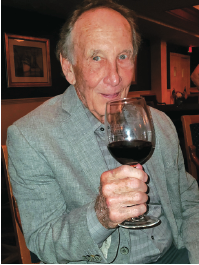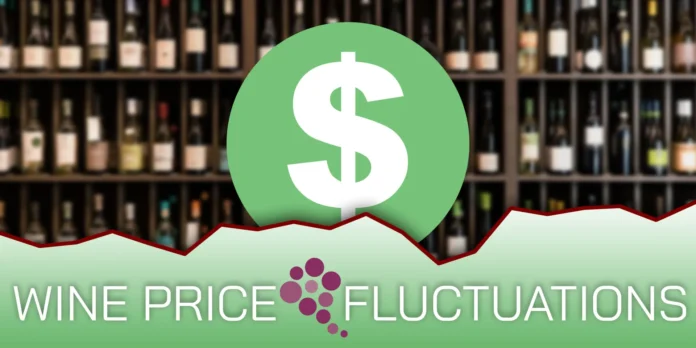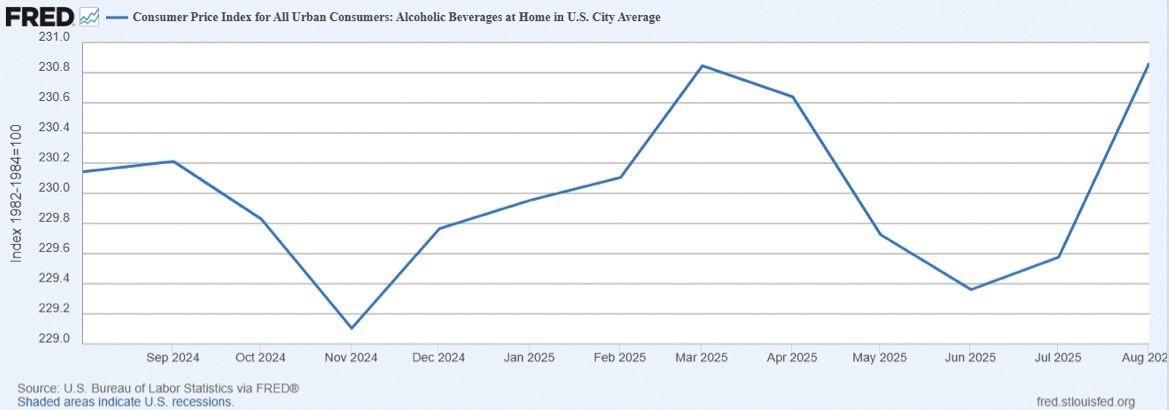S.W AND RICH HERMANSEN
Staff Writers
wine@lbknews.com
The St. Louis Bank, one of the banks in the conservative wing of the Federal Reserve System, maintains the Federal Reserve Economic Data (FRED) web source of economic statistics. These statistics include graphs of recent trends in food and beverage prices in the USA. Data on these trends come from the Bureau of Labor Statistics (BLS), which may have difficulties maintaining the usual high standards of BLS data collection. In light of Trump’s very public firing of BLS Commissioner Erika McEntarfer last August after her agency published jobs statistics that the administration did not like, this may be the last chance for a while to see accurate information about what is happening to the price index of food and beverage for immediate consumption last year via the highly useful and impartial FRED website.
System, maintains the Federal Reserve Economic Data (FRED) web source of economic statistics. These statistics include graphs of recent trends in food and beverage prices in the USA. Data on these trends come from the Bureau of Labor Statistics (BLS), which may have difficulties maintaining the usual high standards of BLS data collection. In light of Trump’s very public firing of BLS Commissioner Erika McEntarfer last August after her agency published jobs statistics that the administration did not like, this may be the last chance for a while to see accurate information about what is happening to the price index of food and beverage for immediate consumption last year via the highly useful and impartial FRED website.
The graphs show substantial increases in prices within food and beverage categories during the dramatic initial phase of selective US tariffs on imports. Equally dramatic decreases in prices occur after Trump backs off his initial threats of tariffs far exceeding those imposed anytime since World War II (except for Trump’s retaliatory late 2019 25% tariffs on still wine less than 14% ABV imported from France and other EU countries). These fluctuations in prices often happen when sellers and buyers are scrambling to dispose of excess inventory, deliver products promised to customers, and maintain market share.
Prices of alcoholic beverages within the US appear to be increasing now that the Trump administration has reinstated historically higher tariffs on imports. The price index of imported alcoholic beverages excluding wine, however, has deceased since its high point in March 2025, while the price index of imported wine made from fresh grapes has risen in August 2025 after falling from its high point in the same month, March 2025. Tariffs appear to affect prices of alcoholic beverages sold in the US in the short-run.
Full disclosure forces us to reveal that alcoholic beverage prices in the long-run trend steadily upward, as do prices of most other processed products, and that fluctuations attributed to historical events show up as minor blips in the series of monthly price levels. We expect to see some acceleration of imported wine and spirits price increases due to tariffs, yet we also expect that vintners, brewers, and distillers will quickly find ways to work around these obstacles. International markets have demonstrated a knack for withstanding attempts by politicians to disrupt them. This latest attempt will likely be lost in a torrent of new events.
S. W. Hermansen has used his expertise in econometrics, data science and epidemiology to help develop research databases for the Pentagon, the National Institutes of Health, the Department of Agriculture, and Health Resources and Services. He has visited premier vineyards and taste wines from major appellations in California, Oregon, New York State, and internationally from Tuscany and the Piedmont in Italy, the Ribera del Duero in Spain, the Barossa Valley and McLaren Vale in Australia, and the Otego Valley in New Zealand. Currently he splits time between residences in Chevy Chase, Maryland and St. Armand’s Circle in Florida.
Rich Hermansen selected has first wine list for a restaurant shortly after graduating from college with a degree in Mathematics. He has extensive service and management experience in the food and wine industry. Family and friends rate him as their favorite chef, bartender, and wine steward. He lives in Severna Park, Maryland.


